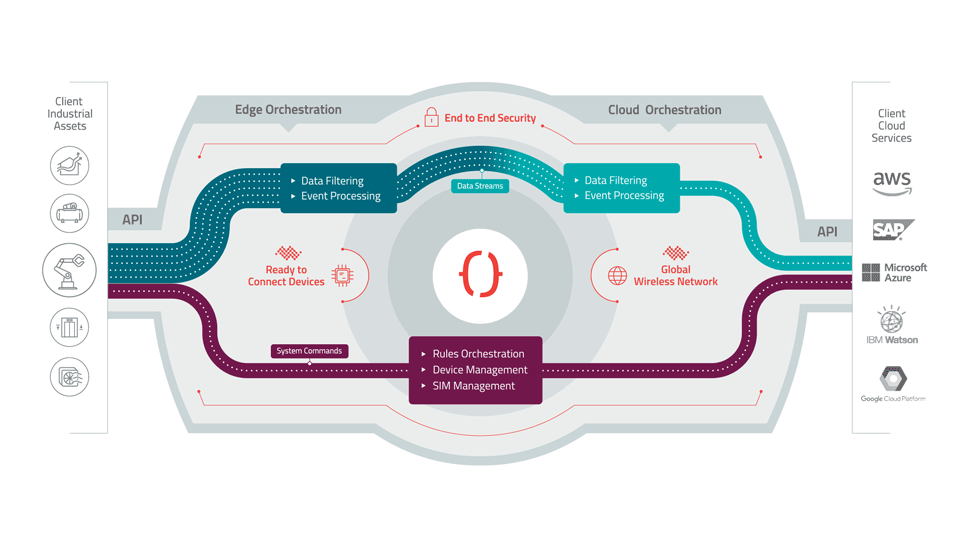Sierra Wireless: To improve the accessibility of our content, please find the audio of this blog post.
How can the industry make cellular connectivity for the Internet of Things more ubiquitous? One solution comes from our recent agreement with Sierra Wireless, an ST Authorized Partner. Connecting a large fleet of devices with itself and the Internet remains a complex problem. Energy consumption, environmental factors, distances, and existing infrastructures all have a tremendous impact. Additionally, future-proofing devices that must have a long lifespan in an ever-changing technological landscape can be mind-boggling. As a result, market researchers struggle to settle on the technology that will make the most sense. Project managers rack their brains to come up with the most suitable solution. And engineers often attempt to plan for certifications and implementations while dealing with challenging technological constraints.
Watch the Sierra Wireless and ST webinar: How to simplify and accelerate the deployment of connected IoT devices, based on STM32 microcontrollers
Sierra Wireless provides hardware and software solutions that facilitate the connection of an STM32 embedded system to a cellular network and cloud services. Adding cellular connectivity to an IoT device requires solving a myriad of variables. Hence, Sierra Wireless can start by providing many connectivity options using plastic or embedded SIM cards. Customers can then create a proof-of-concept using a card in an ST development kit, such as the P-L496G-CELL02. In other cases, Sierra Wireless will recommend their all-in-one edge-to-cloud middleware. This approach simplifies connections to a cloud service, such as Azure or AWS, among many others. Engineers simply need an STM32 MCU for their application and Sierra Wireless’s WP7702 LPWA module, which runs their Octave middleware (more on that later). Consequently, faced with so many possibilities, Sierra Wireless first invites users to get expert advice through their contact form.
Working With STM32 and Sierra Wireless to Simplify Complexities
Too often, teams vastly underestimate the complexities associated with cellular connectivity in IoT settings. One of the reasons is that many in the industry think that adding cellular connectivity to an embedded system is similar to adding a SIM card to a smartphone. However, cellular IoT devices represent a very different use case. The way they interact with the network and the certifications they require are vastly different. Devices also demand a much more reliable interface. A consumer smartphone losing connectivity for a short while is rarely an issue. On the contrary, an unreliable connection may have catastrophic effects on IoT systems.
One way Sierra Wireless enables customers to bypass all these complex issues is with I-CUBE-OCTAVE. Eventually, it will also be possible to configure I-CUBE-OCTAVE from STM32CubeMX to facilitate customization and code generation. The Sierra Wireless software package exposes APIs that help developers connect their edge application faster to any cloud through Octave. It also offers device management, provides firmware over-the-air update mechanisms, supports an LWM2M stack, and it works in all regions. Hence, because the package handles all these features and more, developers can vastly reduce their time to market. In a nutshell, Sierra Wireless can help customers with data orchestration and device management from the edge to the cloud with little coding necessary.

Using Sierra Wireless and STM32 to Avoid Minefields
Another reason projects trying to implement cellular connectivity fail is because there are challenges beyond the implementation stage. For instance, figuring out how to get a product working and certified can be a nightmare, especially when it involves many stakeholders and regions. Sierra Wireless is, therefore, a critical partner because the company has over 25 years of experience with IoT device certification and regulatory testing. Adopting their solution thus means customers can go to market quicker regardless of their deployment region and operator.
It also explains why they want teams to contact them early in their project. While most companies just put a binary or source code online, Sierra Wireless intends to be familiar with the project as early as possible to anticipate its pain points and ensure customers avoid them. And thanks to our close partnership, benefitting from Sierra Wireless’ expertise, knowledge, and solutions on STM32 microcontrollers will continue to yield greater results.
